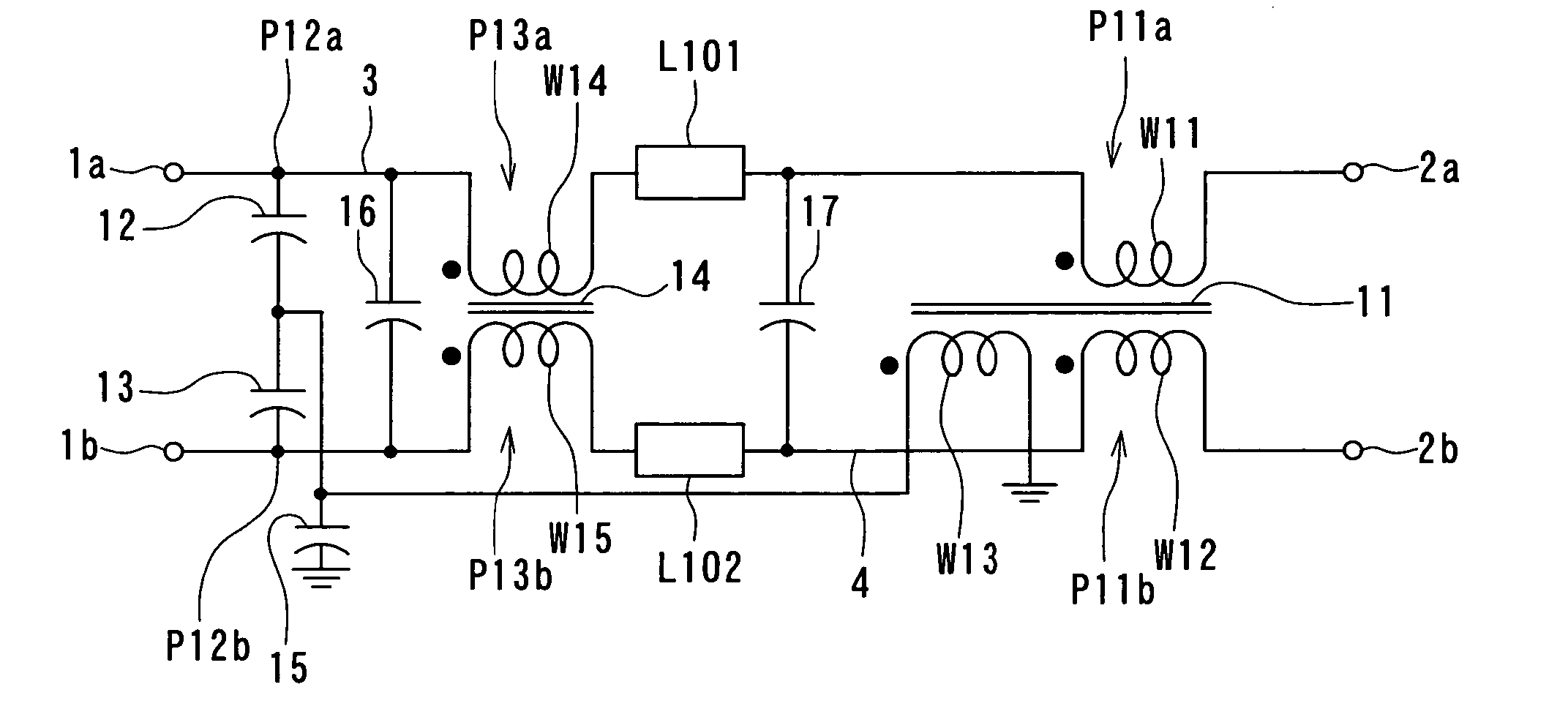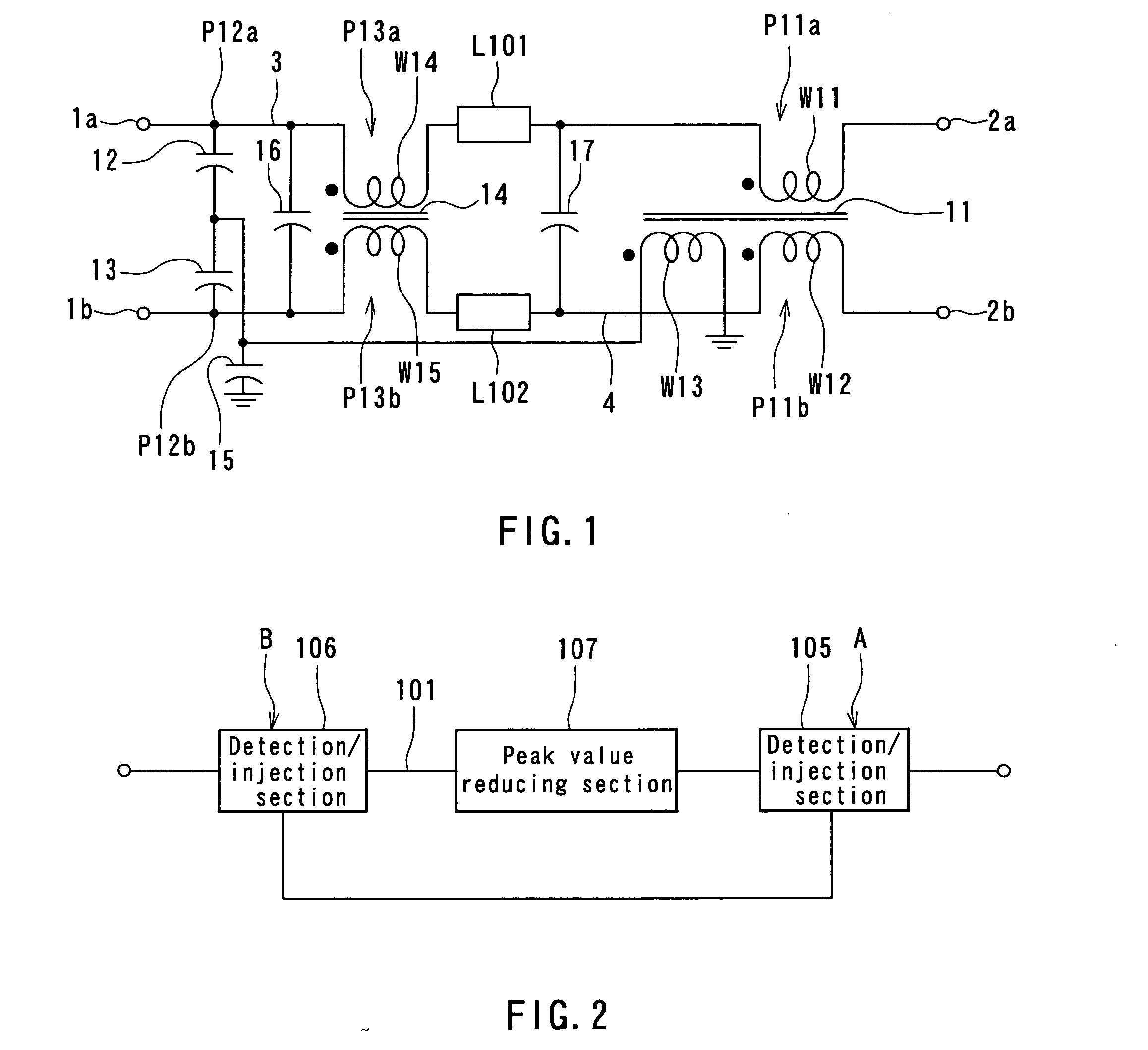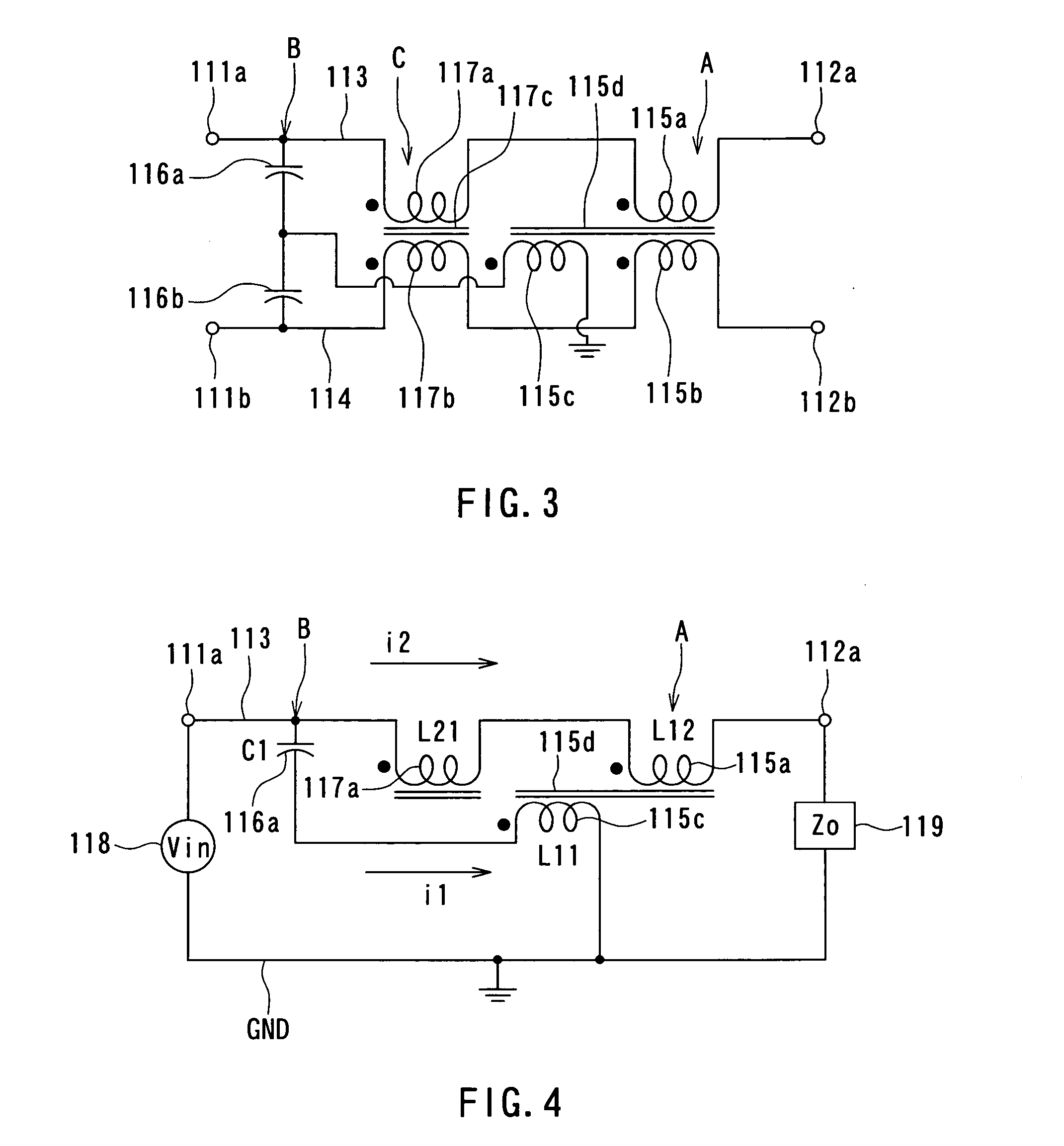Noise supression circuit
a technology of noise suppression circuit and noise suppression, which is applied in the direction of electric controllers, instruments, ignition automatic control, etc., can solve the problems of increasing error rate, affecting other apparatuses, reducing communication quality, and rippling voltage and noise, so as to reduce the size
- Summary
- Abstract
- Description
- Claims
- Application Information
AI Technical Summary
Benefits of technology
Problems solved by technology
Method used
Image
Examples
first embodiment
[0052] A noise suppressing technique employed in a first embodiment of the invention will now be described. A cancellation-type noise suppressing circuit is used in the embodiment. Reference is made to FIG. 2 to describe a basic configuration and operation of the cancellation-type noise suppressing circuit.
[0053] As shown in FIG. 2, the cancellation-type noise suppressing circuit comprises: a first detection / injection section 105 connected to a conductor line 101 at a specific point A; a second detection / injection section 106 connected to the conductor line 101 at a point B different from the point A and connected to the first detection / injection section 105 through a path different from the conductor line 101; and a peak value reducing section 107 provided between the first detection / injection section 105 and the second detection / injection section 106 on the conductor line 101.
[0054] Each of the first detection / injection section 105 and the second detection / injection section 106 ...
second embodiment
[0137]FIG. 16 is a schematic diagram illustrating the configuration of a noise suppressing circuit of a second embodiment of the invention. The noise suppressing circuit of the second embodiment does not include any peak value reducing section. To be specific, the noise suppressing circuit of the second embodiment has a configuration of the noise suppressing circuit of FIG. 6 from which the fourth winding W14, the fifth winding W15 and the core 14 are excluded and in which the first winding W11 and the second winding W12 are coupled to each other to produce a leakage inductance. The magnetic core around which the windings W11 and W12 are wound may have a shape as shown in FIG. 7 to FIG. 14, for example. In this case, the third winding W13 may be wound around the first magnetic path forming portion that forms the magnetic path allowing a magnetic flux for coupling the windings W11 and W12 to each other to pass.
[0138] The windings W11 and W12 produce a leakage inductance on each of t...
PUM
 Login to View More
Login to View More Abstract
Description
Claims
Application Information
 Login to View More
Login to View More - R&D
- Intellectual Property
- Life Sciences
- Materials
- Tech Scout
- Unparalleled Data Quality
- Higher Quality Content
- 60% Fewer Hallucinations
Browse by: Latest US Patents, China's latest patents, Technical Efficacy Thesaurus, Application Domain, Technology Topic, Popular Technical Reports.
© 2025 PatSnap. All rights reserved.Legal|Privacy policy|Modern Slavery Act Transparency Statement|Sitemap|About US| Contact US: help@patsnap.com



